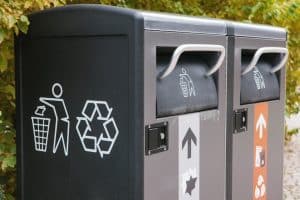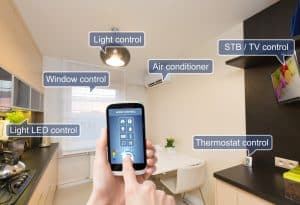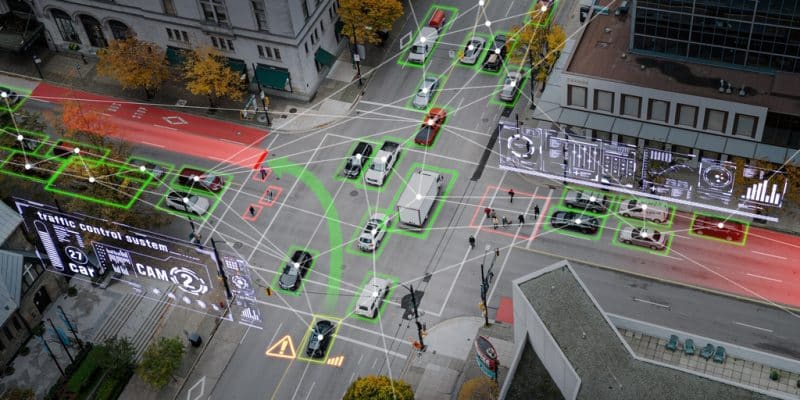In the cities of Cairo in Egypt and Casablanca in Morocco, technology has literally revolutionised the daily lives of city dwellers. Like Toronto in Canada or Singapore, the most connected city in the world, the digitalisation of basic services (urban transport, waste management, energy efficiency of buildings) is a reality in these African capitals. The echoes of this successful digital transformation are beginning to reverberate in other cities across the continent, where global warming and demographic growth are still obstacles to sustainable development.
Smart city, connected territory, cyber city, electronic communities. These are all terms used to describe an urban area that has accelerated its economic and sustainable development with the help of technology. This concept has been very much in vogue since the early 90s and is generally dedicated to large European cities (Oslo in Norway, Barcelona in Spain) and American cities (New York in the United States) and even South-East Asian cities (Singapore). A few African cities are beginning to appear on this very closed list. These include Cairo in Egypt and Casablanca in Morocco.
In recent years, these capitals have experimented with digital solutions that have led to the digitisation of basic services (energy efficiency, intelligent mobility, telemedicine, etc.) for the benefit of their populations, estimated at 20 million, 3.8 million and 3.7 million respectively. Demographic growth is common to other African cities, but no longer necessarily rhymes with unemployment, air pollution and unequal access to resources (water and electricity), thanks to artificial intelligence and the Internet of Things (IoT).
Electronic management of waste and road transport in Casablanca
The first example comes from Morocco’s business capital. Since 2015, Casablanca has been the first city in Africa to join the network of 25 smart cities selected by the Institute of Electrical and Electronics Engineers (IEEE) based in the United States of America. The red city administered by Nabila Rmili is one of the pioneers on the continent to experiment with remote management of road traffic. The system consists of 760 surveillance cameras connected to 220 kilometres of fibre optic cable, making it possible both to control traffic and to enhance security in commercial buildings.
And that’s not all. In Casablanca, geolocation and chauffeur-on-demand solutions have spread rapidly over time, well ahead of other cities in the Cherifian kingdom such as Rabat. This is the case of the legendary “iTaxi” application, which since 2014 has enabled city dwellers to order a flexible driver for any destination on their smartphones, in complete safety and instantaneously. This is also an advantage for decarbonisation insofar as it reduces the number of private vehicles on the road.
This digital transformation is also reflected in electronic waste management. Indeed, if Casablanca’s neighbourhoods are fairly clean today, it is partly thanks to the famous Geographic Information System (GIS) used by the French multinational Suez to “monitor urban cleanliness in real time and allow users to indicate areas to be cleaned”, as reported by the International Organization of the Francophonie (OIF).

A smart bin equipped with sensors that monitor collection and harvest solar energy to compact waste in real time. ©Franz12/Shutterstock
Smart meters and smart homes on the rise in Cairo
Cairo is already more advanced in terms of smart cities. Egypt’s largest city is home to companies and laboratories that are competing with the world’s technological giants. One such company is Elsewedy, which has revolutionised the use of digital electricity meters in homes and institutions in the land of the pharaohs, where it already has 2 million units, most of them in Cairo. These devices, which enable customers to optimise their energy consumption and reduce their electricity bills, have also been delivered to the city of Lyon in France. But Elsewedy’s biggest subscribers will ultimately be the people of Brazzaville, where the energy company has signed a contract with the Congolese authorities to set up “a factory to manufacture prepaid electricity meters” by 2022.
Cairo’s smart city also includes “smart homes”, mobile applications that enable buildings to be controlled remotely. In practical terms, a homeowner can check from work that the lights are switched off in the bedrooms, or control the heating in the house.

A connected home © REDPIXEL.PL/Shutterstock
This is one of the reasons why Africa’s most populous metropolis (after Lagos) was ranked 106th in the “Smart City Index Report” produced by the International Institute for Management Development (IMD) in Lausanne, Switzerland. This is no mean feat, given that Cairo is well ahead of Bogotá (129th) in Colombia and São Paulo (130th) in Brazil.
From real to virtual: bridging the digital divide
Following the example of Casablanca and Cairo, other cities are beginning to grasp the urgent need to combine digital technology with sustainable development. This is the case in sub-Saharan Africa, where the municipality of Plateau in Abidjan has begun its digital transformation. In 2022, the first phase consisted of a virtual representation of the area “as it exists today and how it could evolve in the future”, according to Dassault Systems, which is implementing the project. The French company specialises in design software and 3D (three-dimensional) modelling.
Alongside this technological approach, which should help guide urban planning choices to improve people’s quality of life, other municipalities, notably in Namibia, are focusing on the thorny issue of access to digital connectivity, which is the first step towards an intelligent city. In Oranjemund, 826 kilometres from the capital Windhoek, local councillors are currently focusing on the availability of fibre optics. The City Transformation Agency (OMDis) and the Oranjemund municipality have jointly launched the “Oranjemund Core Fibre Connectivity” programme, which involves the deployment of “67.7 kilometres of optical fibre” in this mining town with a population of around 4,000.

Smart city expo Casablanca, one of the biggest smart city meetings in Africa@UM6P
According to the International Telecommunication Union’s (ITU) report on connectivity in 2022, only 40% of Africa’s population is connected to the internet, compared with a global average of 63%. But the “Digital Solutions for Sustainable Cities in West Africa” project should soon turn the situation around, particularly in sub-Saharan Africa. After a number of field studies starting in September 2024, the initiative supported by the Excellence in Africa (EXAF) research centre at the École Polytechnique Fédérale de Lausanne should encourage the development of real “smart cities” in Abidjan in Côte d’Ivoire, Bamako in Mali, Cotonou in Benin and Ouagadougou in Burkina Faso. These cities will be experimenting with new digital solutions, in particular to strengthen their meteorological systems in the face of climatic hazards such as flooding and drought.
Benoit-Ivan Wansi








You must be logged in to post a comment.